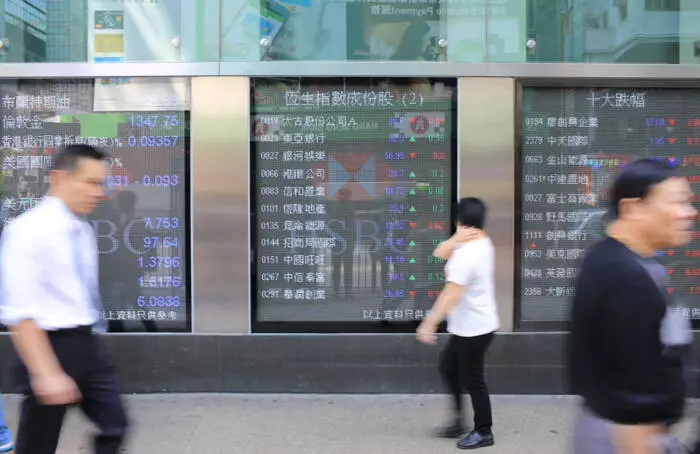The Hang Seng Index has captured attention with a notable rally, increasing by 3.79% and achieving an impressive six-week winning streak—the longest recorded since 2019. This trend signals a level of resilience in the face of global economic uncertainties, particularly in light of prevailing trade tensions. Investors appear undeterred by the looming specter of trade wars, choosing instead to focus on supportive factors like Beijing’s stimulus pledges and robust corporate earnings reports.
A closer look at the sectors reveals the tech industry as a prominent driver of the Hang Seng’s gains. The Hang Seng Tech Index soared by 6.03% over the same period, matching the index’s overall winning streak. Noteworthy performers within this sector included Alibaba and Tencent; Alibaba saw an impressive 11.60% increase after reporting earnings that exceeded revenue expectations, while Tencent also marked a gain of 9.12%.
Conversely, Baidu’s performance tells a contrasting story, as it experienced a substantial decline of 7.30%. This downturn can be attributed to its absence from a significant Beijing symposium and disappointing quarterly revenue figures. Such mixed results within the tech sector reveal both the potential pitfalls and the promising opportunities that characterize the market landscape.
Amidst these fluctuations, the broader equity markets in Mainland China also demonstrated resilience. The CSI 300 and Shanghai Composite Index registered gains of 1% and 0.97%, respectively, signaling robust market activity despite the persistent threats of U.S. tariffs. Investor focus on potential domestic stimulus measures aimed at lifting consumption has helped to alleviate some of the fears associated with trade conflicts. This alignment between policy intent and market performance underscores the markets’ sensitivity to government actions.
In the commodities sphere, performances were decidedly mixed. Gold maintained its momentum, gaining 1.85% to close at $2,936, continuing an upward trend that has lasted for eight weeks. It even reached an all-time high of $2,955 before retreating slightly. Meanwhile, iron ore prices rebounded impressively, climbing by 4.25% to settle at $821.64, providing a lifeline to mining stocks amid broader concerns over economic stability.
However, crude oil took a hit, ending the week at $70.557 after a notable decrease of 3.39%. This decline reflects investor anxieties regarding the potential for a U.S. economic slowdown, which may impact demand dynamics for this crucial commodity. Such mixed signals from the commodity markets highlight underlying challenges and investor sentiment regarding economic health.
The ASX 200 faced challenges, registering a decline of 3.03% due to pressures stemming from a less dovish stance from the Reserve Bank of Australia (RBA) and disappointing earnings from major banking institutions such as the Commonwealth Bank and National Australia Bank. The latter saw significant drops of 8.29% and 14.42%, respectively, underscoring the fragility of the Australian market in the face of shifting economic conditions.
Similarly, the Nikkei Index encountered hurdles, falling by 0.81% as the USD/JPY pair experienced a 2.01% decline to 140.226. The stronger Japanese Yen prompted concerns over negative implications for corporate profitability, particularly among exporters. However, stocks like Sony Corp. and Nissan Motor Corp. countered this trend, with gains of 2.91% and 7.78% respectively, as Nissan considers strategic partnerships to bolster its market position.
Looking ahead, the forthcoming week is set to be critical for Asian markets. Economic data, geopolitical developments, and U.S. tariff announcements will be closely monitored. A potential lack of new stimulus from central banks could test investor appetite further. Notably, the Bank of Japan’s forward guidance may impose pressure on markets, affecting currency fluctuations and overall risk sentiment. As traders navigate these evolving dynamics, staying informed about macroeconomic conditions will be paramount for strategic decision-making.
The Hang Seng Index and its associated dynamics illustrate a richly woven tapestry of investor sentiment, sector performance, and external economic factors. As markets grapple with the interplay of domestic stimulus measures and global trade tensions, understanding these complexities remains essential for investors seeking to navigate the uncertain waters ahead.

